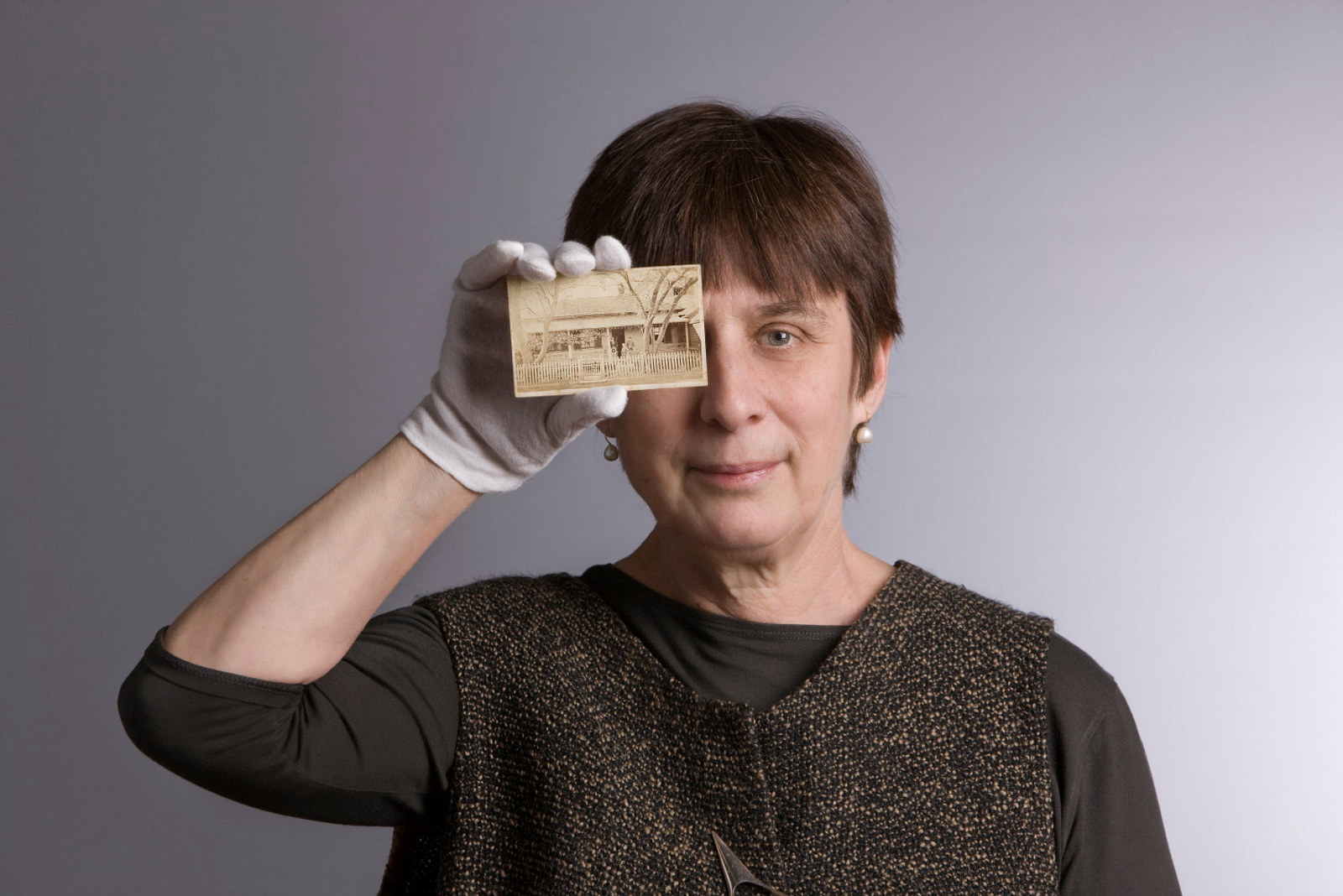Runaways and Returned Transports: A Tale Of Ten Men
The history of convict transportation to Australia is peppered with tales of escape: stories of individual convict runaways who took to the bush; stories of stowaways aboard trading vessels; and tales of piracy, groups of convicts seizing a whaleboat. An unknown number simply disappeared; some were captured and re-transported.
A long history of convict absconders
The very first issue of the first Australian newspaper, The Sydney Gazette and New South Wales Advertiser, published on 5 March 1803, carried a report about convicts who had absconded from government employment and gone on a violent looting spree. Absconders – runaways from government service or private assignment – were rarely out of the press throughout the entire lifetime of the Sydney Gazette, 1803–42. Some were caught, but many simply quietly disappeared.
In 1809 the Principal Superintendent of Convicts began to publish notices in the Sydney Gazette listing prisoners who had ‘absconded from public labour’ or ‘absented themselves from their regular employments’. As time went on, and the population of the colony grew, the lists grew longer and more detailed, including identifying information for each prisoner: name, age, ship of arrival, trade, native place, physical description and whence they had absconded. Sometimes the details included a remark such as ‘2nd time of running’, ‘3rd time of running’ – a few had even absconded for the fourth or fifth time. Some prisoners were described as notorious runaways, others as troublesome characters. The public were warned that some of the runaways carried stolen Certificates of Freedom or tickets of leave. From May 1829 the weekly list of absconders was supplemented with a ‘List of runaways who have been apprehended during the last week’, but the absconders often outnumbered the apprehended.
Sometimes the Sydney Gazette was a bit slow to publish the superintendent’s latest list of runaways, holding it over until the next issue due to the ‘great pressure of local news’ or ‘want of room’.1 These publication delays made life difficult for the Principal Superintendent of Convicts. In August 1830 the then incumbent of the office, Frederick Hely, wrote to Colonial Secretary Alexander Macleay urging the establishment of a regular government gazette ‘in which the name of every Runaway Convict can be published weekly and remain therein until apprehended’.2 The first issue of the New South Wales Government Gazette was eventually published in March 1832.
In the meantime, Hely had been directed by Macleay to provide a quarterly list of all convicts who had been absent for six months or more, to be sent to the Superintendent of Convicts in England. In September 1831 an English newspaper, Police Gazette; or, Hue and Cry, published a full-page list of 97 convicts who had absconded in NSW and were supposed to have escaped from the colony. This first Hue and Cry list included 19 convicts (16 men and three women) who had run away from private assignment. Eleven had seized a whaleboat and escaped from Norfolk Island in ‘a most daring act of piracy’ 3. Most of the others had absconded from government employment: 18 from iron gangs, 12 from road gangs, and 10 from the Hyde Park Barracks.
Successful runaways?
For five of the 10 men listed as runaways from the Hyde Park Barracks, nothing is known of them after the notification of their escape. Charles Browning was the first of these to go, listed as an absconder on 2 January 1830. He was a 28-year-old stable keeper and sailor, sentenced to transportation for 14 years at the Kingston upon Hull (Yorkshire) quarter sessions in October 1828. He was also a recent arrival, having reached Sydney on the transport America in August 1829, when he was assigned to work in the government dockyard.
The next to go was James Richards, listed as an absconder on 30 January 1830. Described as an 18-year-old carpenter’s apprentice from London when tried for ‘pocketpicking’ at the Old Bailey in September 1818, he was sentenced to transportation for life and arrived in Sydney on the transport John Barry in September 1819. In March 1822 he was convicted of a colonial offence, ordered to receive 100 lashes and sent to the secondary penal settlement of Port Macquarie. By 1828 he was working as an assigned servant for the Australian Agricultural Company at Port Stephens on the NSW north coast, and in August 1829 was one of a group of eight convicts, suffering from various ailments, sent to the Hyde Park Barracks by the Company surgeon to be lodged in the General Hospital. Sydney offered opportunities for escape not available at Port Stephens.
James Rennie (or Renney, alias Simmons) was reported absent from the Barracks on 27 February 1830. He was described as a locksmith and bell-hanger from London when sentenced to transportation for life, also for pocketpicking, at the Old Bailey in February 1815. He was aged 34 when he arrived in Sydney on the transport Ocean in January 1816. In January 1821 he was sentenced to two years at the penal settlement at Newcastle for a colonial offence. In April 1825 he was sent to Port Macquarie, this time on a three-year sentence. While at Port Macquarie he worked as a shipsmith (a ship’s blacksmith), so that when he returned to Sydney and to the Hyde Park Barracks at the expiration of his colonial sentence he was assigned to work at the government dockyard.
William Jerrard was also working at the government dockyard when he was reported as an absconder on 13 September 1830. He was described as a 24-year-old musical key finisher from Shoreditch (London) when sentenced to transportation for life at the Yorkshire Assizes in March 1824. He had been arrested in York in October 1823, charged with burglary and identified as a member of a gang of London thieves who had left London on a ‘country speculation’4 in September at the time of the York Musical Festival and the Doncaster races. Once on board the transport Minerva, bound for Sydney, Jerrard was discovered to have been previously transported, in 1815, under the name William Payne, serving a seven-year sentence for larceny. The discovery meant that on arrival in Sydney in November 1824, he was sent to Port Macquarie as a more secure place, where, in March 1825, he was joined by his wife Ann, whom he had married shortly before his transportation. By mid-1826 they were back in Sydney.
Ann had obtained permission from the British authorities to join her husband in NSW, travelling at government expense on the female convict ship Henry. A reunion in the harsh environment of a place of secondary punishment was probably not the scenario either William or Ann had envisaged on leaving England. Ann had arrived carrying a document from ‘a respectable person’ recommending William’s assignment to Ann, and in a petition addressed to Colonial Secretary Macleay in June 1828 she declared that she had been sent to the colony by the home government for the purpose of being ‘allowed’ her husband ‘off the stores on arrival, in order to provide for themselves without any encumbrance to the government’.5
Ann also stated that her husband had been of good character during the time he had been in the colony, and that for the previous 14 months he had been employed as a watchman at the gate of the government lumberyard. Jerrard’s record may have been clean for those 14 months, but in February 1827 he had been ‘deprived of the indulgence of sleeping out’ – in other words, away from the Hyde Park Barracks – on suspicion of being involved in a robbery for which in April 1827 his wife was found guilty of receiving stolen goods and sentenced to 12 months’ imprisonment in the Parramatta Female Factory.
In October 1828 Jerrard was finally granted an exemption from government labour and allowed to live as an assigned servant to his wife, who was then resident in Cumberland Street in The Rocks. But the exemption was for residence in Parramatta and was cancelled in March 1829 when Jerrard refused to accept the restriction. When Jerrard disappeared from colonial records after 1830, so too did his wife.
The fifth possibly successful runaway on the Hue and Cry list was David Ronaldson. He was described in the list as a labourer and seaman, but was said to be an errand boy from Breadalbane (Scotland) when convicted of housebreaking at the Edinburgh High Court of Judiciary in December 1823. He was sentenced to 14 years’ transportation, and arrived in Sydney on the Minerva in 1824, along with William Jerrard. Although only 16 or 17 when tried, Ronaldson was already an ‘old offender’ and was reported by the jailer on the Retribution hulk as ‘cruel and vindictive’.6 He was sent to the penal settlement at Newcastle on arrival in NSW and within a month had received a punishment of 50 lashes for wantonly killing a pig. He got another 50 lashes in August 1825 on suspicion of being concerned in a robbery; was listed as an absconder in December 1826; and was retaken and tried in Sydney in February 1827 as a runaway and sentenced to two years at Moreton Bay (Brisbane). He made his last appearance in colonial records in March 1829 when he was returned to the Hyde Park Barracks at the expiration of his colonial sentence.
Not so lucky
One man who never left the colony but whose name was on the Hue and Cry list was John McMahon, a farmer from Limerick, Ireland. He was 56 years old when convicted of ‘uttering forged notes’ at the Limerick Assizes in March 1825 and sentenced to 14 years’ transportation, arriving in Sydney on the Sir Godfrey Webster in January 1826. In September 1826 he had been assigned to the Engineers’ Department at Parramatta for just four months when he petitioned Governor Ralph Darling for a free passage to NSW for his wife and three sons, aged 19 to 23. The petition was too early in his sentence, and he hadn’t had time to earn the indulgence of family reunion through good behaviour. But when he petitioned again, in January 1829, his conduct record went against him, revealing that he had received 25 lashes in 1827 for harbouring a runaway. McMahon was himself listed as an absconder from the Hyde Park Barracks on 6 March 1830. His apprehension was not reported, but he died at the General Hospital in Sydney on 15 May 1833.
Michael Hyde was another man who probably never left the colony. His name appears on the Hue and Cry list as a 21-year-old plasterer from London, transported on the Marquis of Huntley in May 1826. He was 17 and a repeat offender when convicted of larceny at the Old Bailey in December 1825 and sentenced to transportation for life. His listing as an absconder from the Hyde Park Barracks on 13 February 1830 came with the qualification ‘said to be drowned’.7
Returned transports
Three of the men on the Hue and Cry list definitely escaped from the colony, at least for a time. Alexander Arthur was reported as an absconder on 12 June 1830, John Marshall was listed on 7 August, and John Woodhall on 16 October. All three were later said to have stowed away on the ship Gilmore, which weighed anchor in Sydney on 15 October, bound for London laden with a cargo of Australian produce: sperm whale oil, sealskins, flax, wool, hides, hoofs and horns, wine and brandy.
Alexander Arthur, aged 22 when convicted of stealing money from a shop, at the Scottish High Court of Judiciary in Edinburgh in May 1829, was a calico printer by trade. He was a Glaswegian, and, according to two police officers from Glasgow, a habitual thief. He was sentenced to 14 years’ transportation and arrived in Sydney in May 1830 on the Mermaid. He had been in NSW barely a month when he absconded.
Arthur got home to Scotland, calling himself Thomas Winter, but was soon recognised and was brought again before the Edinburgh High Court of Judiciary in November 1831, charged with returning from transportation without cause, and this time sentenced to transportation for life. He arrived in Van Diemen’s Land (Tasmania) on the transport Katherine Stewart Forbes in July 1832, and in February 1835 died in the convict hospital at New Norfolk, northwest of Hobart. As a ‘returned transport’ he had been debriefed by local officials on arrival in Hobart in 1832 and declared that he had escaped from NSW on the brig Pacific, which had sailed from Sydney on 12 June 1830.
John Marshall was aged 27 in March 1829 when he was convicted at the Lancaster Assizes of receiving stolen goods and sentenced to transportation for 14 years. On arrival in Sydney on the transport Layton in November 1829 he was assigned to the service of a publican named Thomas Brett. He clearly didn’t last long with Brett, because he was quartered in the Hyde Park Barracks when he was listed as an absconder on 7 August 1830. Like Alexander Arthur, Marshall made it home to England, where he had the bad luck to be ‘found at large’ in Birmingham, recognised by an assistant to the prison governor of Lancaster Castle.8 He was tried at the Warwickshire Assizes in April 1832 for feloniously returning from transportation, and sentenced to death. Reprieved, he was transported for life to Van Diemen’s Land on the transport John, arriving in Hobart in December 1833. On 29 January 1835, barely 12 months later, he died in the New Norfolk hospital.
In his debrief on arrival in Hobart, Marshall said that he had stowed away on board the Gilmore, ‘without the assistance of anyone’ and taking enough food with him to last until he came up on deck when the ship reached Rio de Janeiro. He said that at Rio ‘the captain of the ship wanted to give us up but the consul would not have anything to do with it’.9 The Gilmore’s master was William Henry Geary, a former officer in the Royal Navy. His version of the stowaway story was recorded in a letter to his Sydney agent that was published in the Sydney Gazette in July 1831. Geary reported that the ship had touched at Rio de Janeiro to replenish its water supplies and was detained there for six days while he dealt with ‘three runaway scoundrels’ who had been found on board after the ship had left Sydney. He had put them in irons and applied to the British Consul at Rio to have them transferred to ‘a man-of-war of which there were three in the harbour, or in prison until an opportunity offered to send them back’. But while the consul dithered, the men got out of irons on the sixth night and escaped, ‘with the aid and connivance of the crew’. Geary felt that the runaways ‘must have swum to some of the shipping or canoes, which are numerous’.10
Geary did not name the ‘scoundrels’ and, in any case, they probably gave him false names. It was John Woodhall who named Alexander Arthur, John Marshall and himself as the Gilmore stowaways, and he provided that information when he knew that both Arthur and Marshall were dead. It is possible that Arthur did escape on the brig Pacific as he claimed, and that Woodhall was covering for a third man, knowing the authorities would be alerted to the possibility by the publication of Geary’s letter in the Sydney Gazette in 1831. The record of Marshall’s debrief, including the declaration that he had stowed away without assistance, also suggests that he was trying not to inform on his fellow escapees. But he made a slip of the tongue when he said that the captain wanted to ‘give us up’!
Woodhall was a gun finisher from Birmingham aged 22 and newly married when he was convicted of larceny at the Warwickshire Lent Assizes in February 1825 and sentenced to transportation for seven years. He went on board the Justitia hulk at Woolwich at the beginning of May, escaped three weeks later and was recaptured on 27 May in Coventry. He was tried for ‘returning from transportation’ or ‘unlawfully being at large before the expiration of his sentence of transportation’, and sentenced to death. His sentence was commuted to transportation for life, and by late September 1825 he was taken on board the York hulk at Portsmouth, and sailed for NSW in November 1825 on the Sesostris, arriving in March 1826. He was overseer of the blacksmiths’ gang in the Sydney lumberyard when he absconded in October 1830.
Back in England he adopted a new identity, calling himself John Young. Under that name he was convicted of larceny at the midsummer session of the Leicester Assizes in July 1833 and sentenced to transportation for seven years. This time he was sent to Van Diemen’s Land, arriving in Hobart on the convict transport John in December 1833, the same ship in which John Marshall was re-transported. On arrival, ‘John Young’ was placed in private assignment, but in November 1835 he was identified as a probable runaway by the scars above his ankles and on his back – evidence of having been ironed and flogged. He was removed to Port Arthur for safe custody pending confirmation of his status by the Superintendent of Convicts in Sydney.
He was sent back to Sydney in January 1836 and was at first closely confined in the Hyde Park Barracks watch house where, under interrogation, he disclosed the details of his escape as a stowaway on the Gilmore. He said that when he and Alexander Arthur and John Marshall went on deck a few days after leaving Port Jackson the master of the ship put them in irons, but they managed to ‘escape at Rio de Janeiro and went to North America and thence to England’.11
From the watch house Woodhall was transferred to the Phoenix hulk anchored in Sydney Harbour. He spent nearly two years on board the hulk before, in desperation, he petitioned the governor in October 1837, praying to be allowed the ‘indulgence’ of assignment. He recited a tale of model behaviour when he was first transported, rising from deputy overseer to principal overseer in the blacksmiths’ shop in the lumberyard before, ‘a favourable opportunity presenting itself and urged by the love of liberty indigenous in the mind of every Briton’, he ‘effected’ an escape.12
By November 1838 Woodhall was back in the Hyde Park Barracks, assigned to government service until he received a ticket of leave for the district of Parramatta in July 1842. His ticket of leave was upgraded to a ticket-of-leave passport in July 1843, allowing him to travel between Parramatta, Penrith, Campbelltown and Richmond for 12 months. In May 1843 he applied for permission to marry a woman named Ann Davis but was refused on the grounds that he was already married. He died in Parramatta 18 months later, on 23 December 1844, aged ‘40’.13
Footnotes
1. Sydney Gazette, 24 September 1828, p3; 19 November 1828, p3.
2. Historical Records of Australia, Series I, vol XV, pp767–8.
3. Sydney Gazette, 30 October 1830, p2.
4. British Press, 29 March 1824, p4.
5. State Archives NSW: Colonial Secretary’s Correspondence 4/1985 no 28/5418.
6. The National Archives (Kew): HO9/6: Home Office: Convict prison hulks, Registers and letter books.
7. Sydney Gazette, 18 February 1830, p4.
8. ‘Return of a transport’ in Leamington Spa Courier, 6 April 1833, p1.
9. Libraries Tasmania: Principal Superintendent of Convicts: Alphabetical record book of convicts arriving in Van Diemen’s Land: CON31/1/31.
10. Sydney Gazette, 30 July 1831, p3.
11. State Archives NSW: Colonial Secretary’s Correspondence 4/2396 no 38/13658.
12. State Archives NSW: Colonial Secretary’s Correspondence 4/2381 no 37/9786.
13. Age as given in St John’s Parramatta burial register. Woodhall was probably 42 or 43.
Published on
Related
Browse all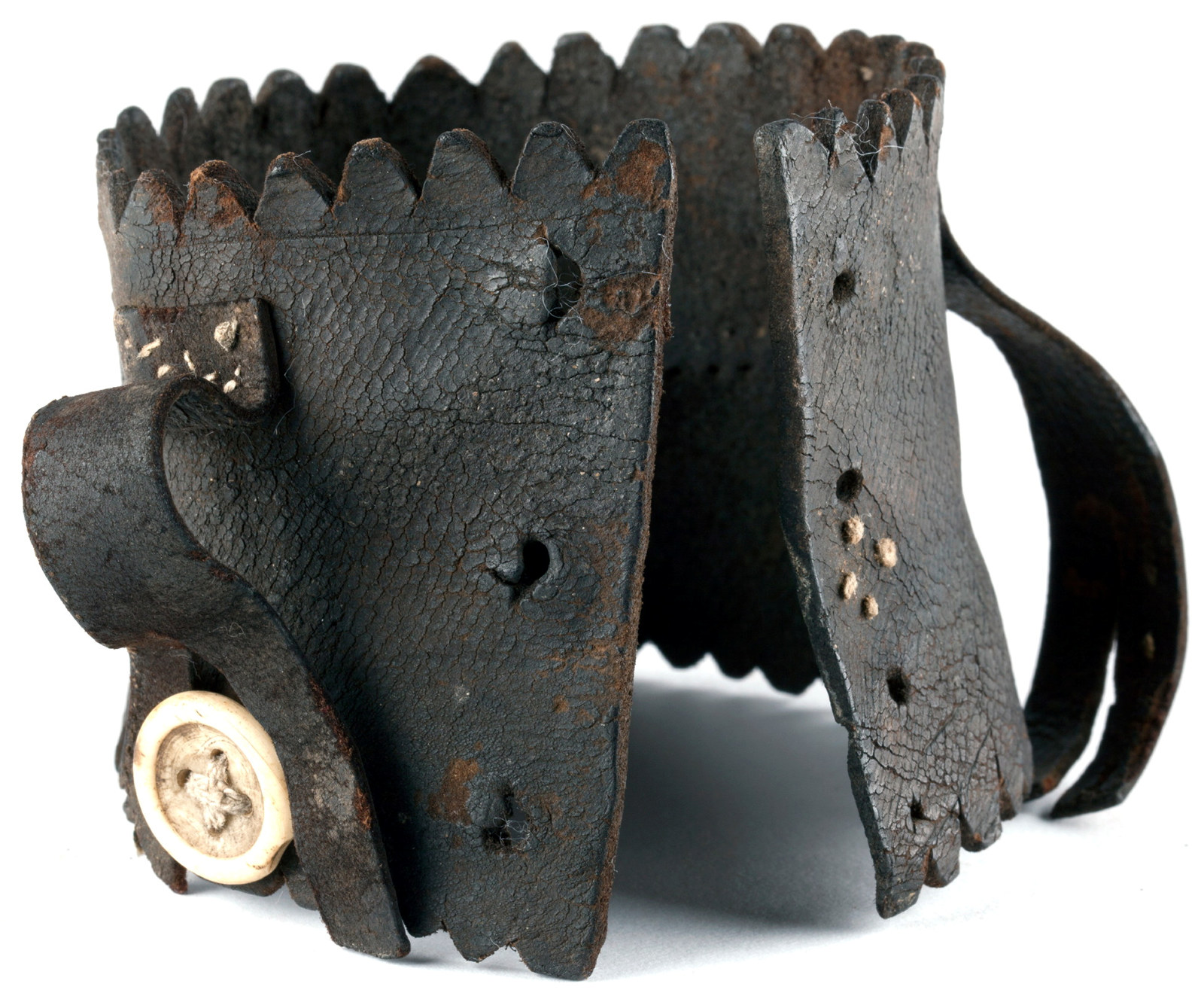
Convict Sydney
Leg Iron Guard
A stunning example of an improvised handicraft, this leather ankle guard or ‘gaiter’ was made to protect a convict’s ankle from leg irons
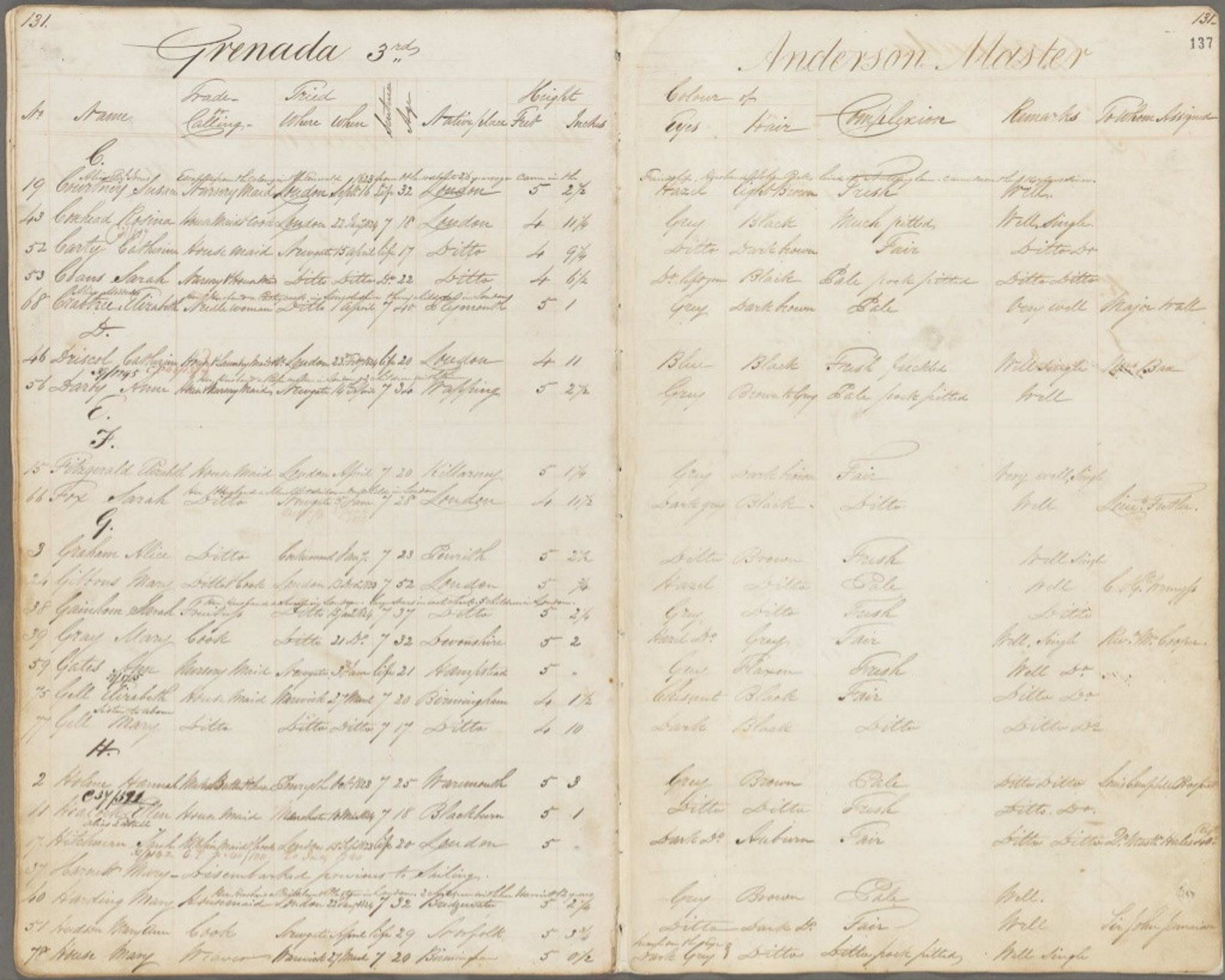
On This Day
10 Sep 1823 - escapee re-transported to NSW
On the 10th of September 1823 Susan Courtney was tried in England for returning from transportation
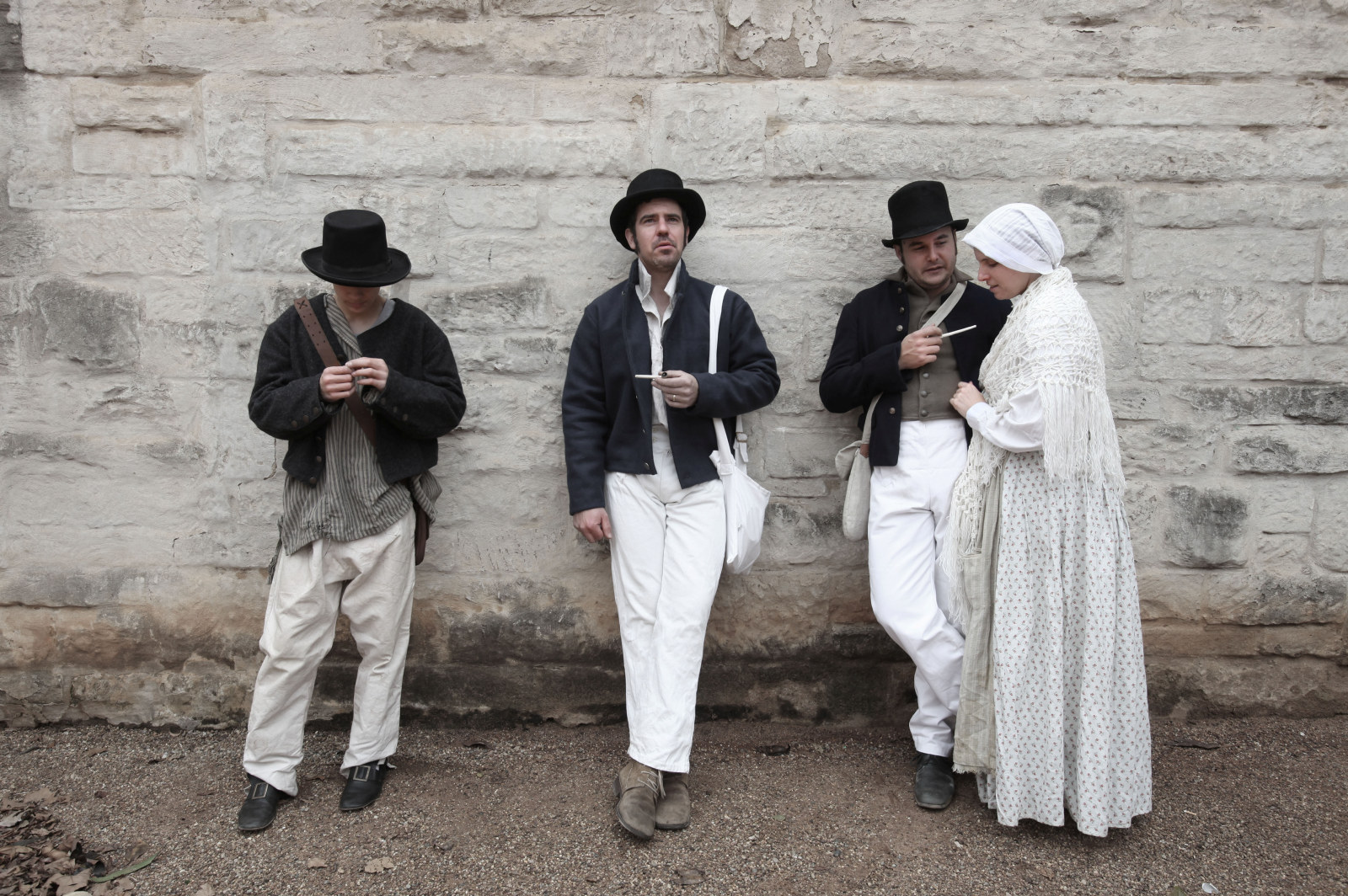
Convict Sydney
1801 - Day in the life of a convict
In the young colony, there was no prisoner’s barrack - the bush and sea were the walls of the convicts’ prison
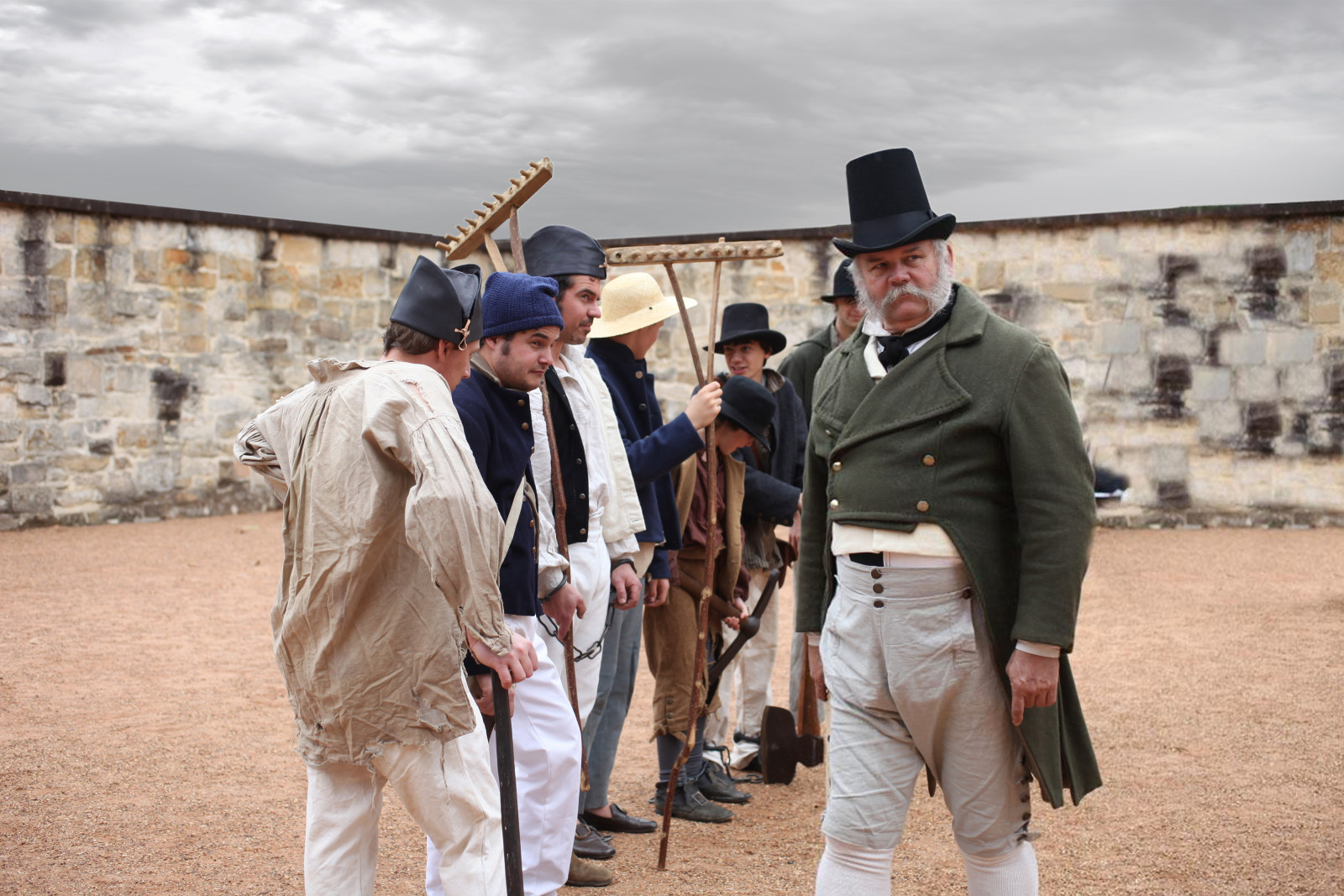
Convict Sydney
1820 - Day in the life of a convict
By 1820 the days of relative freedom for convicts in Sydney were over
